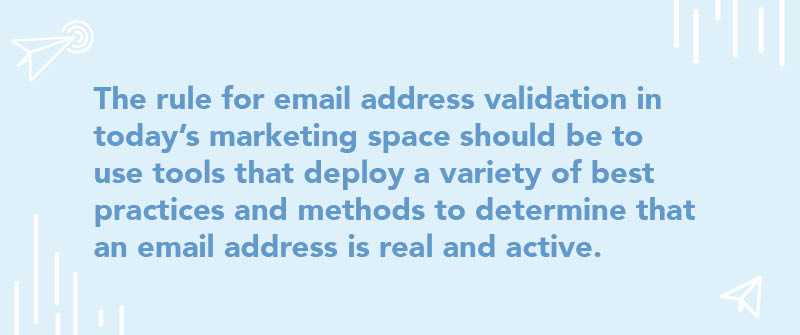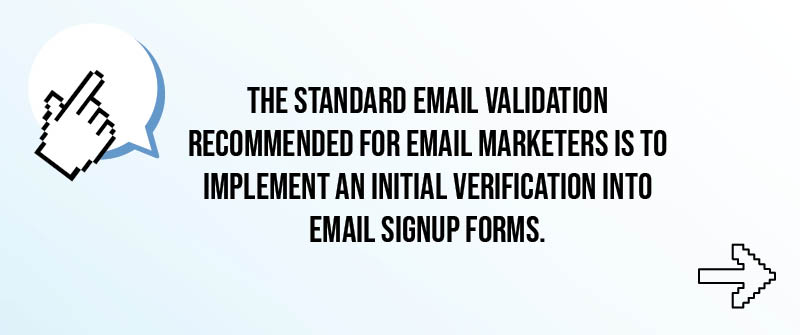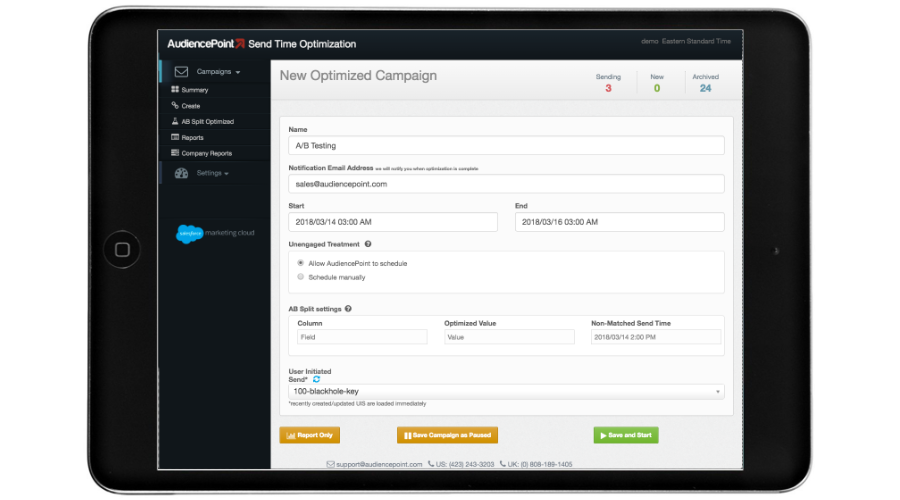In email marketing nothing is more important than making sure your subscribers get your emails. Understanding email deliverability...
On your way toward building a real and active list of subscribers, you’ll probably want to know what email validation best practices are to deploy an effective strategy. You want to make sure only valid email addresses are on your list so your sender reputation is good. But, you probably don’t want to send a verification email for every single address.
In this article, we’ll break down all the email validation rules and multiple verification methods. That’ll include why you should validate email addresses, the proper techniques for weeding out invalid email addresses, and how an email address verification tool fits into the picture. Keep reading for all the details.
Can Email Addresses Be Validated?
Email addresses can be validated. The best way to do so is by using email address verification tools to automate these processes as you grow your email list.
These tools will allow you to do everything from an initial verification that can be performed before subscribers are added to your list to bulk email validation, which can be great for established lists that were never verified. We’ll discuss both options in more detail later in this article.
Should You Validate Email Addresses?
Now that you know validation is possible, you may still be skeptical if it’s worth the investment in pricy verification tools. That said, our answer to that question is a resounding yes. You should validate every email address that is added to your list. Here’s why.

Why Is It Important To Verify Email Addresses?
Many marketers run into a situation where they’re building a significant list of subscribers, and everything seems to be going well.
Upon reviewing the analytics, you suddenly notice that many of your emails are bouncing. That’s because you have many invalid emails on your list, which is often due to spam bots that automatically fill out forms or consumers trying to get around requirements.
Are Email Bounces Really That Big of a Deal?
Your next conclusion may be that email bounces just mean the content wasn’t delivered to that email address. No big deal, right? Actually, it is a big deal.
When content bounces, it’s not only not delivered but also sends negative signals to email inbox providers. Every inbox provider uses algorithms to prevent spammy domains from sending users content. One of those factors is bounces. More email bounces means that inbox providers will start sending more of your content to spam. Many marketers rely on an email bounce checker to avoid their content going to spam.
That means even your active subscribers can start to not see your content. It will significantly lower your engagement rates over time, so taking care of these issues as soon as possible is important.
What Is the Rule for Email Address Validation?
The rule to determine a valid email address used to simply be that you needed a prefix at the left of the @ symbol and a domain with a .com, .net, .org, etc., at the right of the @ symbol. And it would need to be less than 64 characters.
However, if you were to run a simple Javascript program to validate emails in that way, 99.9% of today’s invalid emails would still pass through checks.
That means that the rule for email address validation in today’s marketing space should be to use tools that deploy a variety of best practices and methods to determine that an email address is real and active. That includes doing server pings, IP address lookups, running DNS records, and checking for syntax misspellings.

How Proper Email Validation Techniques Work
When looking at email validation techniques, you’ll have the two mentioned earlier in this article. Those are initial verification and bulk verification.
The initial verification works by integrating a tool with your email list signup form. Then, when someone fills it out, an API call will be performed to verify the inbox of the listed email address is active before adding that new subscriber to your list.
On the other hand, bulk verification involves importing your email list into a verification tool. Then, it will perform various processes in the background, like SMTP checks and running DNS records to authenticate each email address on an established email list.
Email Validation Best Practice Examples
To provide further details, here are some examples of those techniques.
Example #1 – Initial Verification
John runs a startup that offers a low-calorie meal delivery service for those looking to lose weight. To engage his audience better, he decided to build an email list where he asked customers if they’d like to sign up for it during the checkout process.
To ensure he only gets real and active email addresses on his list, he implements AudiencePoint’s email address verification tool into the signup form.
Then, when someone says they’d like to be added to the list, the tool performs a quick API call in the background to verify the email address they input is real and active without ever having to send them an email.
Example #2 – Bulk Verification
Veronica is the marketing manager for a B2B SaaS company and has been building their email list for about 3 years. However, she’s noticed that the bounce rates on her email campaigns have been steadily increasing.
Upon reviewing her list, she noticed that many of the email addresses might be fake, but with 5,700+ emails on her list, she can’t figure out which ones are fake with manual methods.
Instead, she decided to use AudiencePoint’s email verification tool for bulk verification. This tool can do many checks in the background and use second-party data to determine which emails are invalid or dormant quickly and should be removed. After that, her bounce rates and sender reputation improved while seeing steady increases in engagement, which made her email marketing efforts more profitable.
What Is the Standard Email Validation?
The standard email validation recommended for email marketers is to implement an initial verification into email signup forms. It’ll perform a quick API call that immediately ensures new subscribers have active inboxes. That way, you maintain an active list where you only have to worry about creating valuable content to keep engagement rates high.
If you need help with initial verification or bulk verification or simply want to boost your engagement, AudiencePoint has the solutions for you.

How AudiencePoint Can Help Identify Valid Email Addresses and Weed Out Invalid Addresses
AudiencePoint provides tools that can help verify your email list and boost engagement for better performance.
We offer initial and bulk verification solutions to help you clean up your list. Then, you can also use our tools ListFit, Send Time Optimization, and Real-Time Optimization to boost your engagement rates.
These tools will help you:
- Understand how your audience interacts with content.
- Get real-time insights to adjust your strategy quickly.
- Identify and re-engage inactive subscribers.
- Send content at the right time.
- Segment your list.
- And more.
To learn more about how AudiencePoint helps with email marketing, contact us today.




